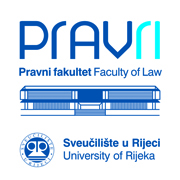UPRAVLJANJE INOVATIVNIM KAPITALOM TRGOVAČKOG DRUŠTVA
SLUČAJ PRIJENOSA OSOBNIH PODATAKA
DOI:
https://doi.org/10.30925/zpfsr.39.4.19Ključne riječi:
zaštita podataka; pravo EU-a; Opća uredba o zaštiti podataka; privatnost; prekogranični prijenos podataka; prijenos podatakaSažetak
Malobrojna su područja europskoga prava koja su se pokazala kontroverznima do mjere do koje je to zaštita osobnih podataka. Posebice se to odnosi na pitanje prijenosa osobnih podataka izvan Europske unije. Pitanje prijenosa osobnih podataka u treće zemlje aktualiziralo se posebice nakon što je Sud Europske unije proglasio
je nevaljanim sporazum “Safe Harbour”, jedan od mehanizama prijenosa osobnih podatka u SAD, a valjanost nekolicine ostalih je dovedena u pitanje, uključujući i sporazum “Privacy Shield”, sljednik sporazuma “Safe Harbour”. U pogledu dijela pravnih osnova za prijenos osobnih podataka u treće zemlje, istaknuto je da trebaju biti ukinute ili izmijenjene kako bi bile u skladu s Općom uredbom o zaštiti podataka.
Nakon analize svake od pravnih osnova za prijenos osobnih podataka koje stoje na raspolaganju društvima iz EU-a, u radu se ističe da “revolucija” osobnih podataka koja je nastupila nedavnim stupanjem na snagu Opće uredbe o zaštiti podataka, nije završila, barem što se tiče prekograničnog prijenosa osobnih podataka.
##submission.additionalFiles##
Objavljeno
Kako citirati
Broj časopisa
Rubrika
Autorska prava
Zbornik Pravnog fakulteta Sveučilišta u Rijeci časopis je u otvorenom pristupu i licenciran je u skladu s Creative Commons Attribution-NonCommercial 4.0 licencom. Sadržaj časopisa u cijelosti je besplatno dostupan. Korisnici smiju čitati, preuzimati, kopirati, distribuirati, tiskati, pretraživati ili stavljati poveznice na materijal te mijenjati, preoblikovati i prerađivati materijal ili ga koristiti na druge zakonite načine, sve dok odgovarajuće citiraju izvornik.
Radove objavljene u časopisu Zbornik Pravnog fakulteta Sveučilišta u Rijeci dopušteno je pohranjivati u institucijske i tematske repozitorije uz osiguravanje poveznica na mrežne stranice časopisa i Hrčka.
Nakon prihvaćanja kategoriziranog rukopisa za objavu u Zborniku, autor smije objaviti isti rukopis u drugom časopisu samo uz suglasnost Uredništva (sekundarna objava). Pri ponovnoj objavi članka, članak mora sadržavati podatak o tome gdje je članak prvi put objavljen.



